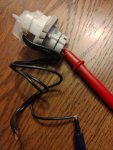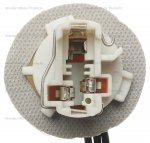I just use cheap meters, still, lol
Never worried about damaging them just don't care to spend money on tools that I only need general information from
It tells me what I need to know, I am not an electrician or electronics tester
For a vehicle its 12voltsDC or its not
In the house it 110voltsAC or its not
OHMs are a pretty wide margin, so exactly doesn't mean much, even specifically made resistors are +/- 5% or even 10%, so spot on accurate meter is fine, but for me ballpark tells me what I need to know
If you haven't bought a meter yet then my price point is $20, maybe $30 if it comes with extra tips like needles and/or clamps(alligator clips)
Never worried about damaging them just don't care to spend money on tools that I only need general information from
It tells me what I need to know, I am not an electrician or electronics tester
For a vehicle its 12voltsDC or its not
In the house it 110voltsAC or its not
OHMs are a pretty wide margin, so exactly doesn't mean much, even specifically made resistors are +/- 5% or even 10%, so spot on accurate meter is fine, but for me ballpark tells me what I need to know
If you haven't bought a meter yet then my price point is $20, maybe $30 if it comes with extra tips like needles and/or clamps(alligator clips)














